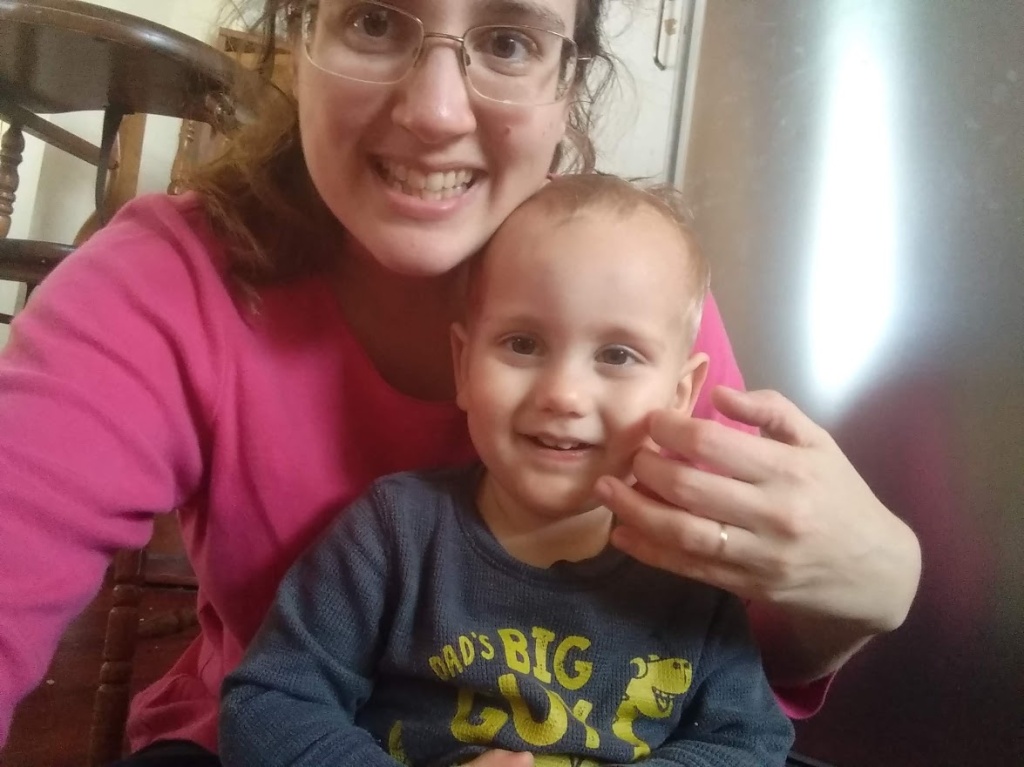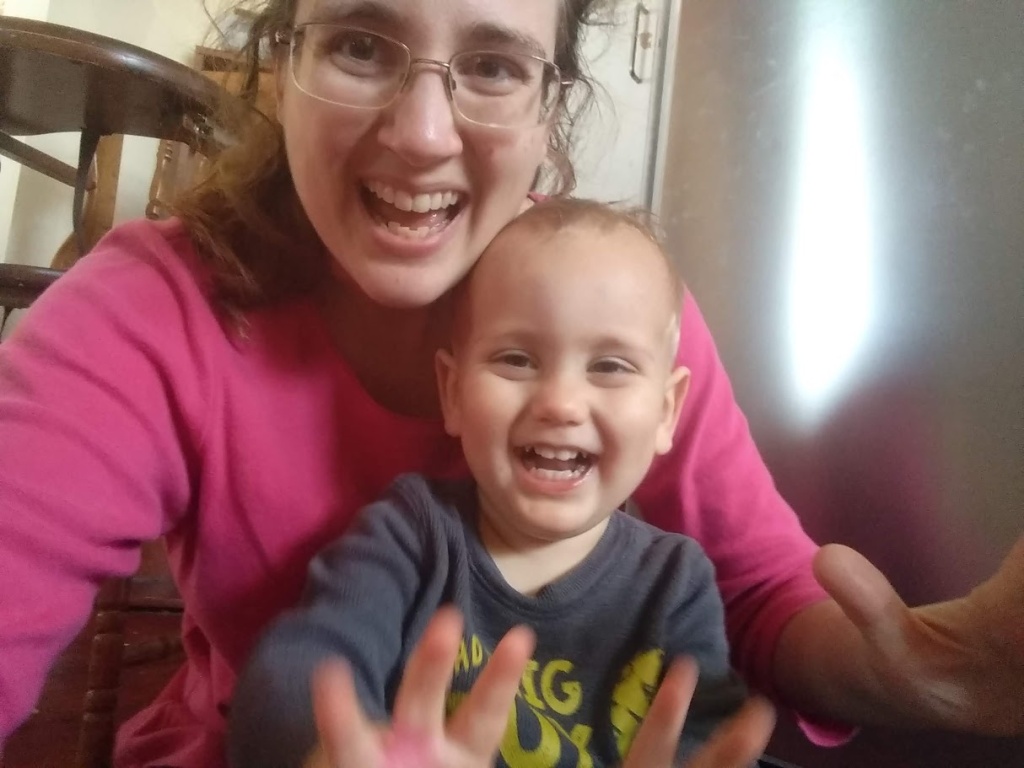Kidpower is my blogging nemesis. I’ve been wanting to write about it for a very long time, but whenever I try, I get tangled up in perfectionism and end up with a hyperbolic landscape of half-finished blog posts. But every parent needs to know about Kidpower because it’s so good! So today I’m just going to write about Kidpower for half-an-hour and publish whatever I end up with at the end of it. [It ended up being more like three hours, but still — I did it!]
Earlier this week I embarked on a series of formal Kidpower lessons with the kids. I already incorporate Kidpower principles in my everyday language and parenting interactions, but I like to do more intentional teaching and practice sessions every so often.
To prepare for the lessons, I went back through all the notes I have in my giant Kidpower Book for Caring Adults. Back when Luke was five, he went through a phase of requesting Kidpower lessons multiple times per day, so over the course of a few months, we had made our way through all the parts of the book that are relevant for little kids. (If you are ready to become an expert Kidpower parent, I highly recommend this textbook of a book. Besides being really great for gaining a deep working understanding of Kidpower principles and methods, it has really nice step-by-step instructions for doing hands-on lessons with your kids.)
As I went through the book, I made a checklist for myself of all the lessons I want to do with my current set of kids (Luke age 7, Nathan age 4, Daniel age 1 1/2, and two foster kids ages 7 and 8). I picked Stop Power, Mouth Closed Power and Hands Down Power to start with because I knew they’d be an engaging place to start, plus they are highly relevant for the pushing-and-shoving kinds of conflicts that the kids have been getting into. But I do want to go back to the beginning lessons soon, so we can lay down that foundation of being calm, confident and aware.
For the first lesson, I got out a bunch of stuffed animals and did some puppet shows on the topic of using Mouth Closed Power and Hands Down Power to stop problems from getting bigger. I gave the kids a chance to tell their own puppet stories and then we gathered in the kitchen in a circle to practice using Stop Power and Hands Down Power with our bodies.
Toddler Stop Power
Even toddlers can learn to use Stop Power, which involves putting your hands up in front of you and say “Stop” in a firm voice, to make it clear to someone that you want them to stop bothering you. I demonstrated this to Daniel a few times and now we have a game called Tickle-Tickle-Stop.

Daniel starts the game by wiggling his fingers and saying “Dee-doo, dee-doo!” I wiggle my fingers back at him, saying “Tickle, tickle!” as I slowly move toward his neck for a tickle. As soon as he puts his hands up and says, “Dop!” I immediately pull my hands back, clap them down at my sides, and say “Okay, I’ll stop!” After he’s done giggling, he’ll prompt me to start tickling again with another “dee-doo dee-doo.”

Now that Daniel knows how to do Stop Power, I’ve been trying to get him to use it in context. His go-to when one of the other kids gets in his space is to push or hit them away. When I see this, I prompt him to use Stop Power instead. So far it hasn’t quite clicked but he’ll get there. In the meantime, Tickle-Tickle-Stop is a big favorite. Luke was playing it with him last night and I want to get the other kids involved so Daniel learns that he can use Stop Power with everybody, not just me.
Safety Rules for Touch and Play
Yesterday I did another lesson with the big kids. This time I was prompted by some trouble one of them got into at school, playing a game with friends at lunch that involved getting on top of the tables and pretending to shoot each other. 😬
They’ve heard me go over the rules for what makes a good game a zillion times, but I figured this was a good opportunity for some in-depth coverage of the subject. Plus I realized that we had not done any practice on what to do if someone is encouraging you to join in on a game that does not follow the safety rules.
Here’s one of my favorite things about Kidpower: it teaches practical skills that are useful for everyday life. But at the same time, the skills are also designed to protect kids if they ever find themselves in higher-stakes situations — the scary stuff like sexual abuse, violence or abduction.
A good example of this are the safety rules for touch. Kidpower teaches that touch and games must be:
- Safe
- The choice of both people
- Allowed by the grown-ups in charge
- Not a secret so everybody can know

That covers so much! For our lesson, we brainstormed examples of games that would not be safe (e.g. punching), games that might not be the choice of both people (gentle punching), games that would not be allowed by the grown-ups in charge even if they are the choice of both people (gentle punching at school) and games that would be a secret (finding a hiding spot to punch each other).
We also talked about how the grown-ups in charge are different depending on where you are. We discussed the different places we go and who’s in charge at those different places: teachers at school, volunteers at church, and ride operators at the amusement park.
Then I acted out some little puppet shows where Turtle tries to get Sammy to play a game and Sammy uses Think First Power to realize that it breaks one of the safety rules.
Drawing from the first three of the Five Levels of Intrusion, I showed how Sammy can remind Turtle about the safety rules in case he didn’t notice that his idea was not a good game. “I don’t want to play that game because it’s not allowed by the grown-ups in charge.”
I showed how if Turtle doesn’t listen the first time, Sammy can get up and make a fence with his hands to show that he means it: “No, I’m not going to play that game.”

And I showed how if Turtle tries to make Sammy feel bad by saying, “You’re not my friend if you don’t play this game,” Sammy can say, “I am your friend, and I’m not going to play that game. We can play a different game instead.”
Luke was fiddling with a little airplane and while I was acting out the puppet shows, he would zip the airplane through the scene with little snippets of relevant commentary. It was cute and showed me that he still has a foundation of background knowledge from the previous discussions and lessons we’ve done.
After the puppet shows we did some practice with our bodies, specifically with making a fence with our hands while saying no to an unsafe game. The kids had a lot of fun coming up with ridiculous propositions to suggest to each other. “Let’s play on top of the kitchen cabinets!” “No! That’s not safe and we would get in trouble with the grown-ups in charge!”
This is definitely just a start but I’m excited to do more. I like the format of doing a short puppet show at the table followed by a short practice session in the kitchen. I’m happy that the kids are interested and engaged. I’m glad that we can do it with Daniel around and he doesn’t get in our way too much. (He likes to sit on the table and grab at the puppets but it hasn’t been too much of a distraction.)
Kidpower Books
Last night I was on Amazon looking for another copy of the Kidpower Safety Comics. We have an old copy lying around somewhere but the new version is in color and I think it has more content. We used to have the new version too but I sent it along with our last set of foster kids when they moved out. So today I ordered two more copies — one for us to keep and one for our current foster kids.
But now I am overwhelmed by choices because I discovered two more Kidpower resources that I didn’t know about before. (I’m not a Kidpower affiliate, I promise — just a big fan!)
The Kidpower 6-Part Teaching Books Series looks like it is perfect for what I’m trying to do with the kids. I got the first one on Kindle and I love how it has lesson plans with step-by-step instructions for both group and individual practice. The only drawback of the Kindle version is that I can’t read the lesson plans on my Kindle screen because the text is too small and blurry. (It’s one of those converted-to-Kindle books that’s not actually reformatted for the Kindle so you can’t change the text size.)
I did have a good time reading the story pages to the kids the other night. (It has stories we’re familiar with from the Safety Comics plus other stories in the same style.) I like the simplicity of reading the comics on the Kindle because there’s just one image per page and we can talk about the story before we move on to the next page. With the traditional Safety Comics, you have eight images on the double-page in front of you and there’s more pressure to move on to the next scene because the kids are already looking ahead.
From what I’ve seen so far, I really like the content of the Teaching Books series. The problem is it’ll cost $120 if I want a hard copy of each book to put on the dining room table and use during a lesson.
The alternative I found is the Kidpower Confident Kids Safety Lessons, which has 15 group lessons in one book. I’m just not sure how much it has in the way of individual practice. I do have dreams of running people-safety lessons for my homeschool co-op so I think it would be a good fit for what I’m envisioning there, but for my own kids at home I want to go more one-on-one.
I told Claudiu I was having a hard time deciding which new Kidpower books to buy and his response was to stage-whisper “All of them! One at a time — or is there a discount to buy the whole set?”
There’s no discount that I know of, so I think I will go ahead and order just the first teaching book for now. Once we finish all of those lessons, I will get the next one! And I will save Confident Kids for when I’m actually ready to turn my co-op dreams into a reality. Maybe this summer!

Good job for getting this post done! I love the idea of a kid power co-op class. And it’s fun to see Sammy in a blog! 🥰
LikeLiked by 1 person